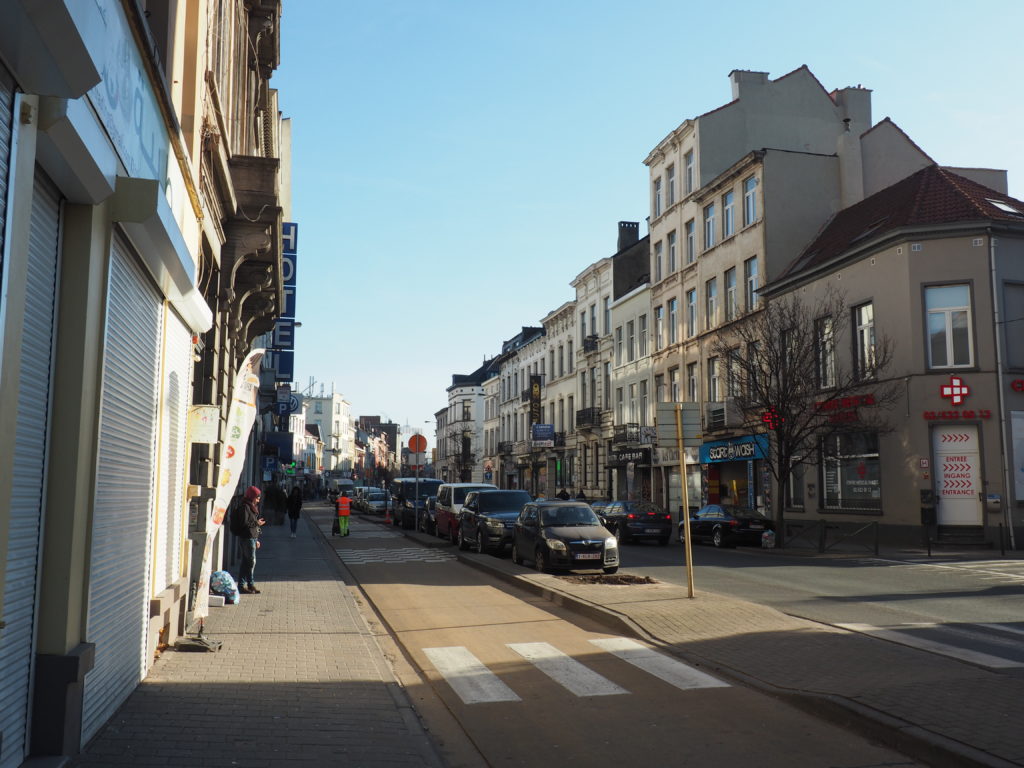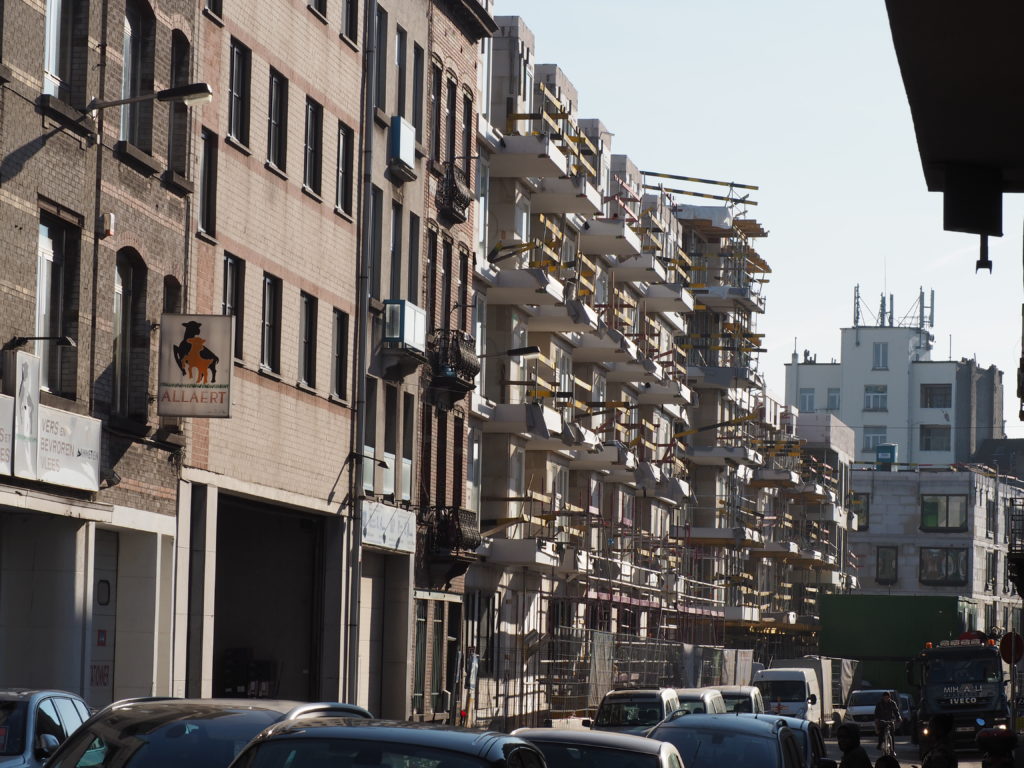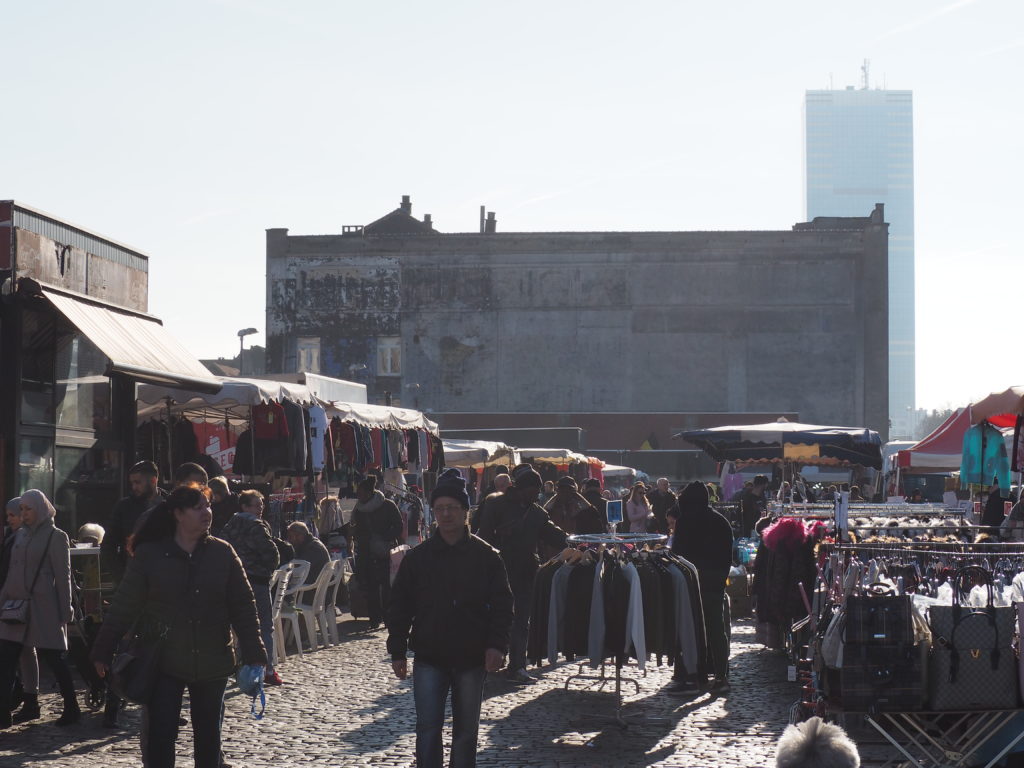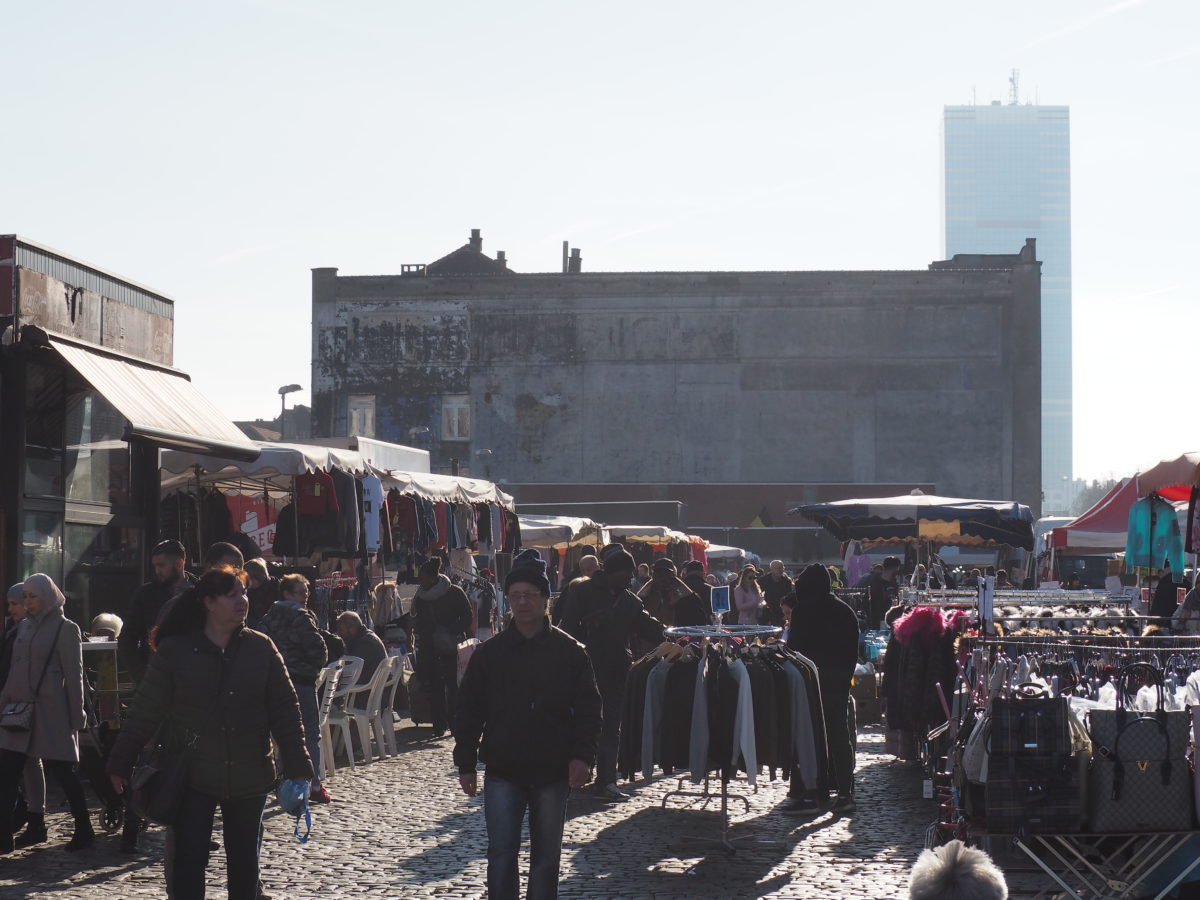When I came to Cureghem for the first time, I had heard about the district mainly from stories told by my colleagues from the syncity project, who had already visited the district before the initial project partner meeting. They had told me about the large market hall and the slaughterhouse, and about the central location of the Brussels district. I had heard that the district fulfils a double transit function: for arriving migrants and for cars that are exported to Africa via the backyards of Cureghem. And it was said that Cureghem and its inhabitants were under pressure of gentrification.

When I came to Cureghem for the first time in January 2019, I found a residential area that was not very spectacular in my first impression. Many people with migration experience, many low standard apartment buildings, many small stores, many car repair shops and also a lot of informal trade on the sidewalks around the Abbattoir’s large market hall.
The gentrification pressure that was mentioned in the syncity project was not immediately noticeable. There were construction sites here and there. Nothing unusual for a district in the middle of a European city. The social workers involved in the syncity project reported on the problems in the quarter, on failed urban development, on the sometimes cramped and unreasonable living conditions of the people in Cureghem. Within syncity, Cureghem was spoken of as an example of a “deprived urban quarter”.
Shortly before the trip to Cureghem, I had read two texts about Cureghem, both of which also draw the picture of a socially deprived urban quarter. Muriel Sacco had already written about the revitalization of the quarter a decade earlier. „For several decades, Cureghem has been a neighbourhood of transit, i.e. a gateway to the city for new migrants waiting for an improvement in their socio- economic situation. The neighbourhood is composed of a large working-class im- migrant population, and took the brunt of the effects of deindustrialisation: an in- crease in the rate of unemployment, the development of eyesores, urban degrada- tion, cohabitation problems, the feeling of insecurity and an increase in school drop- out rates. Due to its geographic and social isolation, Cureghem was also abandoned by the municipal authorities. With its mainly immigrant population, the neighbourhood was of little interest with respect to elections.” (Sacco, 2016)

Yves Rouyet had written half a decade earlier about the area along the canal that separates Cureghem and Molenbeek: “The canal area has therefore always had a deplorable image. With the working-class population being joined by a wave of immigrants af- ter World War II, the neighbourhoods along the canal in Cureghem, Molenbeek and Laeken were discredited or at best ignored, and were therefore abandoned by the dominant classes, who mainly lived ‘on the other side of the canal’, in the municipalities to the south and east of the region.” (Rouyet, 2014)
On the second evening of the project trip to Cureghem, we visited the Abbattoir, where an “After Work Event” was taking place. People were drinking and eating in the market hall. There were cocktails, DJs played music. On the fringes of the event, a BMW dealer exhibited a fancy new model. Someone from the syncity team said to me that it shocked him that high-priced cars were exhibited here, in the middle of the deprived quarter. Our project group did not like the event and the Brussels project partners said that it was not aimed at the residents of the deprived quarter, anyway. The target group of the after-work event was rather residents of the suburbs of Brussels, who would come to Cureghem especially for this event.
We left the Abbattoir to have a beer in a pub across the street. There were men sitting in the pub watching football. I ordered a beer and wanted to pay for it with a 50 Euro bill, because I didn’t have any other cash with me. A colleague from the syncity project pushed my banknote under the table when I wanted to give it to the waitress and explained to me that I could not handle such large amounts of money in Cureghem. I should not forget the situation of the people in the neighborhood.

Two days later we strolled through Cureghem again in the morning and we went shopping at the weekly market in the Abbattoir. We sat in the sun outside the market hall and drank coffee. We visited the Aquaponics farm on the roof of the Food Met market on the Abbattoir grounds, which is not yet fully completed, and talked about sustainable meat production and the need for food to be given a fair price that also takes into account its ecological footprint. Then we bought meat for the evening meal outside Cureghem. It was paid with a 50 Euro bill.
